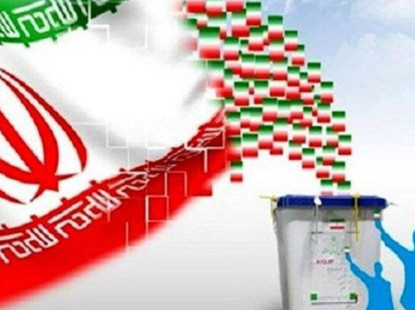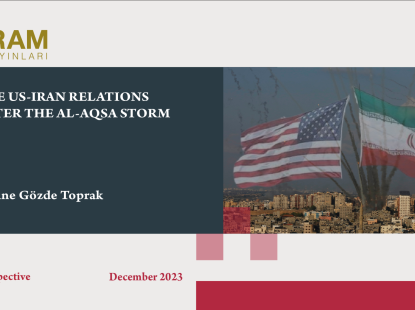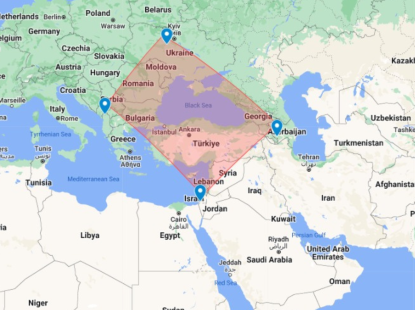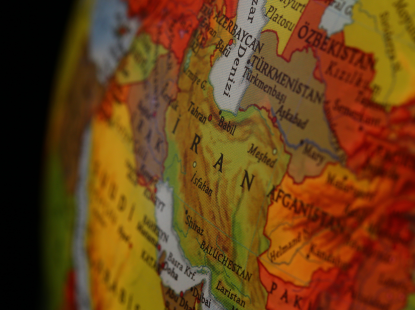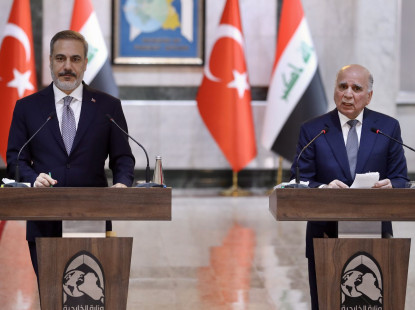The Water Crisis is Growing Between Iran and Its Neighbors
In recent years, a wide range of water-related factors has led to some problems as political instability, migration, food insecurity, violence, etc. As economies and populations expand worldwide, the water demand has grown, and the availability of water resources is increasingly influenced by climate change. Iran, like many other countries suffering from severe water shortages, is encountering a catastrophic water crisis. Low precipitation levels have aggravated Iran’s water scarcity. Moreover, today, Iran faces one of the driest years in five decades and is experiencing power cuts. Increasingly scarce water supplies, declining access to clean water, and electricity problems lead to internal tensions and violent conflicts in the country. The latest example of protests over the water shortage and mismanagement erupted on July 15 in several cities across Khuzestan province.
Water scarcity also leads to disputes with neighboring countries over water use in shared river basins. Apart from the water issue in the western Iran-Iraq border, long-standing water disputes continue between Iran and Afghanistan, including the rivers Helmand/Hirmand and the Harirud. The Helmand/Hirmand River is the only river subject to a treaty (1973 the Afghan-Iranian Helmand-River Water Treaty) on the transboundary river basins shared by the countries and at the center of a growing dispute over water rights and dam building. The Iranian government argues that the dams will cause environmental damage. At the same time, Afghanistan advocates the necessity of dam construction to ensure the water and food security of the country and its existing rights on water. Regarding this, Kamal Khan Dam, which has been mainly discussed recently, was inaugurated on March 24, 2021. While the controversy as to the dam was going on, Afghan President Ashraf Ghani announced in his opening speech of the dam that Afghanistan would no longer provide free “additional” water to Iran and would sell water in exchange for oil from now on. On July 28, Syed Mohammad Omar Eshaq, the Director-General of Harirud-Murghab River Basin, National Water Affairs Regulation Authority (NWARA) of Afghanistan, told İRAM that “dams are great tools for regulating water flows to the downstream areas. Kamal Khan Dam is a strong tool for the Government of Afghanistan to control and regulate the seasonal floods of Helmand River, and certainly, it has a positive impact on the implementation of the 1973 Helmand River Water Treaty.”
In their statement, Iran and Afghanistan state that they comply with the Treaty. However, there are some claims that Iran received more water than its right. About these claims, he noted that “complying with the 1973 Helmand River Water treaty has always been Afghanistan’s stance. Kamal Khan Dam’s construction is a positive means for full implementation of the treaty, and now that the dam is completed, the flow of water to downstream will be more regulated, and it can be proved whether Iran received more water than what was allocated in the 1973 Treaty or not. Afghanistan’s concerns to Iran’s activities on Helmand River shall be expressed during joint technical meeting, and the basis for negotiations shall be real data from Helmand River Basin.”
Moreover, according to some residents and some officials of Afghanistan, Tehran is concerned about the opening of the dam projects of Afghanistan, and it provides the Taliban with weapons and aid to sabotage the infrastructure projects of Afghanistan; on the other hand, Iran denies these accusations. Afghanistan is going through a challenging process with the Taliban regarding dams. While the allegations of threats from Iran and the Fatemiyoun Brigades for the Bakhshabad dam, which is under construction in Farah province, were reflected by the public, it was claimed that the security of the dam was undertaken by the Taliban. Afghan authorities confirmed that the Dahla Dam in Arghandab was under the control of the Taliban in recent times. “The water infrastructures in Afghanistan are spread throughout the country and mostly located in remote areas. Therefore, these structures are very vulnerable, and the Taliban try their best to take over the control of such important and strategic locations, and according to news, in some cases, they have succeeded in doing so. On the other hand, the Government of Afghanistan is trying its best to neutralize the Taliban attacks, and it is an ongoing conflict,” Omar Eshaq said.
The tension between the two countries continues throughout the Harirud River with a third country, Turkmenistan. Iran and Turkmenistan have built dams and canals on the river since 2004 without the intervention of Afghanistan. Afghanistan began to revive its effort for water development in the source of the Harirud River by constructing dams in particular. Both sides consider Afghanistan’s projects regarding the Harirud River as a matter of “human security.” On whether there is a water agreement on the agenda between the parties in the Harirud River Basin, “no official talks on the matter has occurred between Afghanistan, Iran, and Turkmenistan,” Omar Eshaq added.
Water is a regional issue with international implications as it is directly linked to regional security. Therefore, cooperation on the water is very significant. According to Omar Eshaq, “Afghanistan has been through several decades of conflict and as a result, could not manage its precious water resources. However, now that the country’s situation has relatively improved, as an upstream country, Afghanistan can rightfully justify its activities for regulating Harirud River through the construction of dams like Salma and Pashdan.” Furthermore, “water shortage is a very serious problem in the region, and if all the regional countries want to deal with the water scarcity problem and at the same time bring harmony and stability in the region, cooperation between the countries is inevitable,” Omar Eshaq said.
Finally, Iran faces an escalating set of water challenges, including a disparity between reliable renewable water availability and water demand, allocation, and distribution of water, internal disputes over the control, and disputes with neighboring countries over shared watersheds. In a nutshell, these pressures, coupled with internal and international political tensions, threaten to exacerbate and increase the possibility of water-related conflicts and present an urgent issue for President-elect Ebrahim Raisi.




